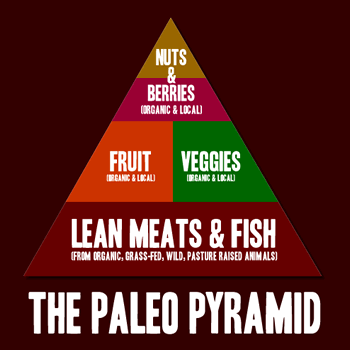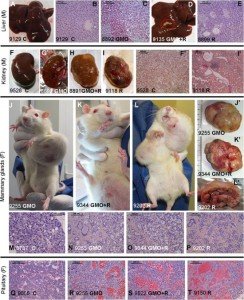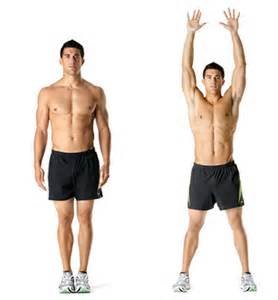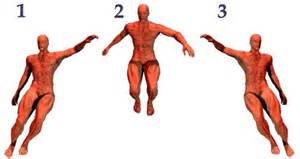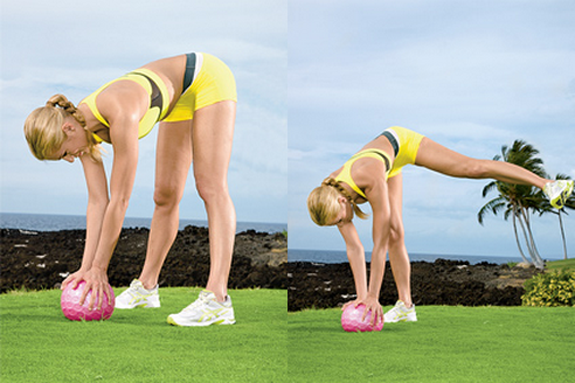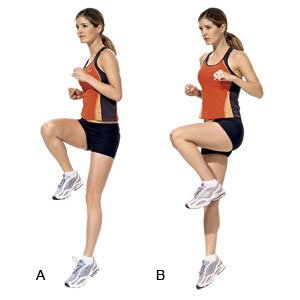Monthly Archives: October 2013
Fatigue
Getting a handle on fatigue
The most common complaint a healthcare professional hears is Fatigue. A quick glance through the Merck Manual, a multi-edition text that details most clinical conditions, you will see that fatigue is a symptom to most of them. Fatigue has several causes. However, taking steps to narrow down these causes can lead to an accurate diagnosis and deliver good results. Since some causes may be related to each other, it makes sense to have the appropriate tests to help you find which ones are relevant to you. Finally, a realistic treatment approach must be taken that does not follow common conceptions about how to deal with fatigue and which probably don’t apply. With the following steps, getting a handle on fatigue can become very real.
Sleep
So why is fatigue so common? The easy answer is that we are rarely consistent about taking the actions necessary to promote an energetic state. One such cause of fatigue is lack of sleep. Most people when asked consider 5-6 hr of sleep sufficient. This is inaccurate. The old adage of 8 hours of sleep is the amount needed, maybe even a little more. It is not enough to get just 8 hours of sleep, rather you must get 8 hours of sleep during times of darkness. This is important because many hormones are dependent on the circadian, or 24 hour, rhythm. Therefore, ideal sleep is estimated between the times of 10 pm and 6 am. This is the time in which the body is to rest. The energy systems of the body are so efficient during daylight hours at providing us energy for activity. Yet during nighttime hours they support rest and recuperation. If this is not allowed to take place, then the body does not adequately recover from the previous day. When this occurs often enough, the body becomes rundown and fatigue begins to onset. One additional note to consider with sleep is that it needs to be restful. For many, sleep is very light and the deeper stages of sleep are not achieved. Reaching the deeper stages of sleep has proven the most restful and allows for the refreshed feeling in the morning as opposed to waking tired. Attempting to overcome fatigue without quality sleep is a futile effort that will lead to disappointing results.
Cortisol
While lack of sleep can negatively affect the hormones, hormones in their own right when imbalanced can result in fatigue. The most common hormone associated with fatigued states is cortisol. Cortisol is a survival hormone. It is often nicknamed the stress hormone as it is the hormone that has the greatest fluctuation in times of stress. The predominant role of cortisol is to maintain stable glucose levels. Glucose is the primary energy source for the body. Either we have adequate glucose for energy, or we convert other components like fat and protein into glucose for energy. When our glucose levels drop too low in blood, it is cortisol that stimulates release of stored glucose from the liver to provide energy. However, with repetitive stress, the glands that produce cortisol lose the ability to continually manufacture it. When this occurs, there is not enough glucose available to continually fuel the cells with energy. This is like trying to run your car without gas. This state is most commonly noted by episodes of hypoglycemia. Examples of being hypoglycemic would be less energy in between meals, roughly mid-morning or afternoon and/or irritability if you go too long without food. This is a problematic scenario since being hypoglycemic taxes the cortisol producing adrenal gland over time making it more difficult to respond to low states of glucose. If this scenario progress long enough or often enough, the cells become less responsive even when glucose is present. Correction of cortisol dysfunction to address low energy is dependent on many things. .
Nutrient defiency
Another common cause of fatigue is nutrient deficiencies. Nutrient deficiencies were once thought to be rare, however valid clinical testing now allows us to see that the average person has 4-5 nutrient deficiencies, sometimes many more. Even those that are taking supplemental vitamins and minerals are not immune from deficient states. This can be related to poor forms of nutrients, improper combinations of nutrients and lack of assimilation after taking. Vitamins and minerals are most analogous to spark plugs in your care. They are not the main source of energy, but they keep all the cylinders firing. Vitamins and minerals don’t supply energy to the body. That is the role of glucose and oxygen. What vitamins and minerals do among there many functions is to act as cofactors to support the metabolic workings of the body. They allow glucose to go through all the energy production cycles of the body so that it may be used for energy, but they don’t give you energy. This is a false assumption. The only way a vitamin or mineral can provide energy is by making the pathways of the body that generate energy more efficient. Likewise, vitamins and minerals are also needed to produce healthy red blood cells, which transport oxygen. Without oxygen, energy cannot be made. In fact all of the energy production cycles can run effectively, but if you cannot supply oxygen, you will not produce energy. Making sure that you have adequate supplies of nutrients on a daily basis depends on several factors, but some of the most important include a quality diet that focuses on Paleolithic principles as well as targeted nutritional supplementation to address your specific needs as identified through testing.
While these are not all the causes of fatigue, they are the most common. Giving attention to fatigue in a systematic manner allows you a better understanding of what you may need and how to treat it. Unfortunately, a lot of people deal with fatigue related issues simply because they have many times not had their basic needs met like I was mentioning above.
Strict Vegetarian Diet Improves Gut Function in Metabolically Challenged People
It’s All About the Science, Not Mantra
Foremost, you may find it odd that the Paleo Doctor, who so strongly advocates the Paleo Diet, is getting behind the benefits of a strict vegetarian diet. To that point, ideology is not important, but the facts derived from science are. As it relates to gut function, science suggests that vegetarians have a hand up on the typical Paleo Diet mantra of high protein and high fat. While often applied as high protein and high fat, the Paleo diet is not in fact meant to be high protein or high fat. Rather it is a diet founded in the consumption of unrefined foods that remain in their natural living forms with high nutrient density.
What the Vegetarian Can Teach the Paleo Diet Person
Let me be clear from the outset here, I am not recommending a vegetarian diet. However, there are some things that people that follow, or that are just learning to follow, the Paleo Diet,could take away from a proper vegetarian diet that is high in living plant based foods. When consumed as it was intended, a vegetarian diet supplies high quantities of the food group that should predominately be the diet. Vegetarians have it right by consuming vegetables and fruits. These should be the greatest percentage of the diet. However, where they have it wrong is that it should not be the only part of the diet. Key micronutrients (vitamins and minerals) and macronutrients (protein) are absent from the diet.
The Importance of the Gastrointestinal Tract
The gastrointestinal tract is the fundamental system of the body. Through it we are able to begin to turn food into the necessary components that our body needs to stay functional. Likewise it also acts a regulator of the immune system, helps manage cholesterol and glucose to help control body weight and fat, and helps control inflammation. Most of this is done through the action of the beneficial bacteria of the gut, the probiotics. When probiotic colonies are supported they flourish and keep chronic low-grade inflammation suppressed. However, when they do not get the nutrition that they need, glucose is not as well controlled, cholesterol and triglyceride levels increase and inflammation goes up, just to name a few things.
Vegetarian Diet Keeps Gastrointestinal Tract Healthy
The key to keeping the probiotics of the gastrointestinal tract functional and viable is related to the type of food consumed. This is where we champion the vegetarian diet. According to Environmental Microbiology Reports (2013 Oct;5(5):765-75), a strict vegetarian diet improves the risk factors associated with metabolic disease by altering the microorganisms in the gut and lowering intestinal inflammation. The reason that the vegetarian diet excels in this function is that it is full of high fiber foods. The higher the fiber content of the diet, the greater the availability of short chain fatty acids, the fuel source of the probiotics. The probiotics in turn grow and positive change is made in the intestinal environment. As the probiotics increase their colonies to support our health, they reduce the growth of bad bacteria that harm our health.
How to Support Gut Function, the Vegetarian Way
Not to be redundant, but because it is important enough to repeat, the Paleo Diet when properly applied should borrow some key concepts from a strict vegetarian diet. The strict vegetarian diet provides ample quantities of plants, most notably fruits and vegetables. These foods offer benefits unparalleled by other food groups that affect the health of the probiotics in the intestines. If the probiotics are growing and producing healthy populations, our bodies will be healthy and at less risk of chronic disease. Therefore as a Paleo Diet eater, you still want to maintain a diet that is mostly plant based focusing on vegetables and fruits.
What is the Right Age to Start the Paleo Diet?
Paleo Diet Exceeds Common Childhood Nutrition Recommendations
Is the Paleo Diet the right diet for babies and children? I would argue that the Paleo Diet is not only the right diet for humans regardless of age, but that it is the most optimal eating pattern period. While some may argue this point, it is important to recall what the Paleo Diet is. It is a diet of real food that has not been processed and that provides unparalleled nourishment for our bodies. In short, the Paleo Diet is a commonsense approach to eating. Is it counterintuitive to mainstream recommendations of diet for infants and children? Yes it is. However, when you look at the basic dietary needs of the infant and developing child, one can quickly conclude that the Paleo Diet meets those needs. In contrast, what do not meet those needs are the mainstream recommendations commonly given. Childhood nutrition is about more than giving adequate calories.
Good Childhood Nutrition Begins with the Mother
The natural aging process tells us that babies need their mother’s milk for at a minimum the first year of life. So is mother’s milk considered Paleo? Whether or not the milk is Paleo and devoid of immune stimulating properties is dependent on the mother. Infant nutrition is directly tied to the mother’s nutrition. Therefore, if mom is not Paleo, neither is the baby. So from the outset, mom sets the stage for her child’s immune function by her food choices. Mothers have an opportunity to provide babies with many of the nutrients and immune system regulating substances needed through breast milk. But this is a fairly logical argument. A healthy mother generally equals a healthier baby. Vice Versa, if the mother is not consuming an optimal diet, she is not providing the fetus or infant, depending on the stage of development, with the nutrients that they need. It is the next stage of development and feeding that can become more controversial and which I often find myself debunking commonly held myths.
The Most Common Childhood Diet Myth
One of the most common myths presented at the time of weaning off of breast milk, or formula, centers around the introduction of solid foods. The myth revolves around the consumption of grains. Contrary to popular belief, grains are not an essential food category. While they may be a staple of some populations in the world, they are not critical to the diet to maintain good health. In fact, for many, they are a detriment to good health. A closer look at what grains provide shows that other food categories offer the same thing, but without some of the health related concerns. After examining grains, they are predominantly carbohydrates, which when offered to children can have a significant impact on the secretion of insulin. Granted, there is a need to secrete insulin to promote growth on some level, but excessive secretion is problematic and has led us to the public health crisis of childhood obesity.
The Food Choice that Is Most Optimal for Kids
A far better option is starchy vegetables and fruits. These provide the same necessary carbohydrates, promote enough of an insulin response to encourage normal growth and weight increase, all without the risk of exposing the developing child to potentially allergenic grains. Additionally, these foods are nutrient dense, having significant quantities of the vital nutrients needed to fuel the growth process. By evolving into solid foods with vegetables and fruits, the stage is set for the food category that should make up the majority of the diet as an adult.
The Ideal Diet for Kids
Are they ever too young to eat Paleo? Not when you are following the natural progression of development and introduction of food substances. Childhood nutrition is fundamental to growth and achieving developmental milestones. While the application of the Paleo Diet may be controversial with the young, it should not be. It is a diet of unrefined, whole foods packed full of nutrients. What mother would not want her child afforded the best opportunities, especially for good health. This begins with the Paleo Diet, both for mother and child.
Corn; A common Food Allergy
Food Allergies
Associated delayed reactions & food allergies, have become increasingly common. In my practice, I am seeing more patients enter my clinic with reactions to foods that they commonly eat. I often see diverse reactions among my patients. The one question I seem to hear most often is, “Why am I just now reacting to these foods?” “My parents ate this food and they were fine”. This can often be a source of frustration and it’s no wonder, you are reacting to foods that you have been told for years are good for you.
Corn
There are many reasons for food allergies, especially to corn. The first is the misconception that corn is a vegetable. We have all been told to eat our vegetables for years. In fact, I still tell my patients that the majority of their diet should be derived from plants. However, when it comes to corn, we are more accurately talking about a grain. We may think about it as being part of our garden, but the corn you are likely to grow in your garden is much different than what is grown in fields and mass produced.
Different types of corn
There are many varieties of corn. Corn grown and eaten a century ago is of the variety of sweet or flint. Another species of corn also exists, known as dent. Dent corn is more commonly referred to as “field corn”. This is for good reason as it is the most common form of corn you see growing in fields. If you have ever seen pictures of large corn fields throughout the Midwest, this is “field corn”. Why do I take the time to differentiate between the two? Isn’t all corn same? Not at all. And the difference is at least in part, why we are seeing more reactions to corn and now considering it a common food allergen.
Corn produces it’s own pesticide.
Field corn as a species is genetically modified. Corn was originally hybridized to make it sweeter and decades later genetically modified to produce it’s own insecticide. Additionally the genetic makeup of corn has been manipulated to allow production of the BT toxin, a bacterial toxin. This toxin is often found in the soil. Are you starting to get the picture? You are eating a substance that in no way resembles what your forefathers ate. On top of that it is producing its own toxins. From this point, it is a slippery slope right into food allergies, and the more common sensitivities. Corn is no longer a food substance, but rather a science experiment perpetrated on the American public to determine the conclusion. The data is coming out, and it doesn’t look good for us.
The Paleo Diet
In general, I recommend that you take no chances with consuming problematic strains of corn. All corn that is refined, feed to animals at feed lots and used in the production of corn based products is genetically modified. If you wish to avoid the ill effects of this food, you will need to move to a Paleo diet. The Paleo Diet is known to aid the reduction of allergies, not just to corn, but to all common food allergies. If you must absolutely consume corn, make sure it is of the sweet or flint varieties, preferably organic. As it stands, organic foods are not genetically modified. While most of the non-field corn is not genetically modified, the agricultural conglomerate Monsanto, has started working their way into these species as well. Buyers beware and do your due diligence.
Unfortunately allergies are common, and with the manipulation of our food supply, they will continue to become even more prevalent. If you wish to protect yourself and your family’s immune systems, avoiding the common food allergens like corn, wheat or soy should be a strong consideration. While I have highlighted the implications surrounding genetic modification, this is only one aspect of corn, and other grains, that contribute to its high allergenicity. If you are serious about getting rid of your allergies and all the associated side effects, making a dietary, lifestyle change is a must and there is no better place to start than the Paleo Diet.
Corn is not a vegetable. Corn is a GMO.
Better Memory Is Only A Paleo Diet Away
Memory is A Skill
Have you noticed a decline in your memory? Do you find it harder to remember things these days? Are you walking into a room and forgetting why you went in there or do you forget someone’s name 5 seconds after they just told you what it was? These are all indications of poor memory. Many people think incorrectly that memory loss is simply a part of the aging process. Memory is an acquired skill that must be nurtured. As we age we can actually enhance our memory by providing our bodies with what it needs and by putting our brain to work.
It’s not your age, it’s your Diet
One of the reasons that many think that memory loss is part of the aging process results from lack of awareness of those things that rob the brain. The brain, like nearly all areas of the body has specific requirements. It must have a constant energy source so that it can carry out the tasks that we place upon it. The brain also demands precursors to help it form new tissue. That stated, our diets have a significant role to play in how our brains function. The diet either helps us develop new neurological tissue and think better or it sabotages us by promoting a chronic inflammatory state that damages our brain tissue over time, resulting in potential memory loss.
The Paleo Diet
The Paleo Diet provides the perfect ground work to develop a better memory. Again, having a good memory means having a good supply of energy to the brain routinely to allow it to carry out its function. As glucose is the preferred energy source for the brain, a diet that manages glucose levels and prevents fluctuations will support memory. Studies have shown than when the glucose levels are stable the brain is able to form new networks of interconnections. The complexity and function of the brain grows. In contrast, when glucose levels are unstable, the brain suffers and interconnections are not made. Even worse, an overall state of inflammation is created that stimulates neurodegeneration. You don’t notice it all at once, but the brain is slowly declining as neurological tissue is lost.
Fatty Acids
Equally important in the management of brain health, are fatty acids. Fats make up the coating around the nerve cells that speed up the processing of a neurological impulse. Additionally, they also are needed to make healthy membranes for the nerve cells. Without these fats, the nervous tissue begins to degenerate. It does not have the ability to repair itself as consistently as it needs to. Moreover, just as abnormal levels of glucose can cause inflammation in the brain, so to can fats. Diets higher in inflammatory omega 6 fats such as those found in the Standard American Diet (SAD) contribute to neurodegeneration. Likewise, diets such as the Paleo that lead to consumption of higher amounts of omega 3’s as are found in nuts and wild protein sources inhibit the inflammation. Not only do they inhibit brain tissue damage, but they also promote brain tissue development.
I’m sure you have heard the expression “use is or lose it”. This applies as equally to the muscle tissue as it does to the brain function . When you use your brain on a daily basis, and give it the necessary precursors and nutrients that it needs, your memory enhancement will change as quickly as changes in muscle tissue from exercise.
Will A Paleo Diet Work For Athletes?
Being an Athlete
Athletes are a unique subset of the population. The demands placed on their bodies can sometimes be staggering, especially when compared to the average person. Athletes tend to have higher requirements than most. The need to support higher metabolic rates and intense training schedules can present a challenge when trying to match the appropriate diet to the athlete.
Diet Myths
In general, athletes strive to be healthy individuals on many levels, including their food selection. Dietary myths for the athlete such as carbohydrate loading and excessively high protein diets have seemingly permeated the culture. Yet, in this present day, we realize that better options are available. One such option is the Paleo Diet. The Paleo Diet provides a diversity of nutrients, is inherently anti-inflammatory, and provides the necessary components to support recovery. These are all crucial for enhanced athletic performance.
Understanding that the diet of the athlete is highly critical for success, a closer look is required for the athletic population. Add to this that not all athletes are the same in their requirements. Some athletes, such as endurance athletes, have to be able to derive energy over a long time frame. On the opposite end of the spectrum, strength athletes often go for only a very short duration of time, but need a diet that can support muscle development to move large amounts of weight quickly. For most however, somewhere in the middle is ideal. But is the Paleo Diet flexible, but yet useful enough to support both extremes and those in the middle.
Enough Calories?
The advantages of the Paleo Diet are many, especially for the athlete. However, one of the limitations that has been presented against the Paleo Diet is that it does not supply enough calories to support the metabolic needs of the athlete. There are many confounding problems with this viewpoint, the first of which is the assumption that calories are the primary concern where the athletic diet stands. This is a fallacy. Yes different athletes will require different amounts of calories, but the true importance of the Paleo Diet as it relates to the athlete is the hormonal stage that it sets. The diet of the athlete must be such that it promotes an anabolic state. This is regardless of the type of athletic activity.
What is an anabolic state?
An anabolic state is required for healing and recovery. It is necessary to prevent excess muscle breakdown. When the diet is low in inflammatory foods such as refined foods and grains, the ability to repair tissue is enhanced. The time needed to recover from a high intensity workout is decreased. Ultimately, a quicker recovery time and an improved recovery make for enhanced athletic performance.
Carbohydrates
The Paleo Diet has more than adequate amounts of carbohydrates to fuel the average athlete. For those that are working out longer periods, this just means that some of the less attractive foods like potatoes may need to be brought into the diet. By doing so, you continue to maintain the tenets of the Paleo Diet, eating real foods that are not processed. Accompanying the intake of carbohydrates will certainly be adequate protein and fat, for which the Paleo Diet has not been accused of under-delivering.
If you are an athlete, look deeper into the Paleo Diet and the idea of eating real, unprocessed foods. Like others, you might be surprised how your performance actually increases when properly applied.
Gut Bacteria and Paleo Diet Lead to Weight Loss
Gut Bacteria
We find microorganisms everywhere in our environment. If you leave a piece of produce out on the counter, in just a few days it will have bacteria or fungus on it. This just emphasizes that these “micro-bugs” are a part of our world. We don’t think of bacteria being a good thing, often considering it a forerunner to becoming sick. However, bacteria are an essential part of our environment, especially the microenvironment of the gut. They work to keep us healthy and support the immune system. Their effect is so strong that they are able to alter our body composition, influencing whether or not we are able to stay lean, or if we put on a few extra pounds.
Proven Research
The composition of the bacteria in the gut creates a state that either helps maintain lean body mass or promotes fat deposition. Originating from studies on mice, it was noticed that the makeup of the bacteria in lean mice was different from that of obese mice. Interestingly enough, to drive home the impact of these microorganisms, when the gut bacteria between lean and obese mice populations was interchanged, lean mice became obese and obese mice became lean. From this research, we can clearly see the impact of having different strains of bacteria in the gut.
The idea of having an altered bacterial profile as part of the metabolic syndrome presentation gave rise to the adiposity index, a measure of the different categories of bacteria in relation to each other. Compromised of two groups of bacteria, this ratio is highly influenced by the forms of foods that one consumes. The diet is not only an energy source for the microorganisms of the gut, but also has the ability to shift the balance of bacteria, possibly leading to fat loss.
The Paleo Diet
The Paleo Diet has a significant influence over shifting the bacterial colonies more towards those that promote fat loss and a leaner body composition. At this point, you may be asking yourself how food can have such a significant impact over bacteria. It is not just any food, but the food that makes up the Paleo Diet. A key point to consider is that the Paleo Diet focuses on real, unrefined foods that have the potential to rot or spoil due to their living nature. The part of the Paleo Diet that offers the most direct impact are the colorful constituents of the diet, particularly those from produce. The compounds that provide color are known as polyphenols and they are potent antioxidants and antimicrobials. Fortunately for the person eating a Paleo Diet that concentrates on adequate intake of vibrant colored vegetables and fruits, their balance of bacteria will favor fat and weight loss.
The gastrointestinal tract is the foundational system of the body. It holds influence over every other bodily system. Therefore, why would we expect that it would not have an impact on our body composition? Creating an intestinal environment that makes weight and fat loss easier is all about making the right food selections. A balanced diet like the Paleo Diet centered on the intake of colorful plant based foods is the foundation to not only improving your body composition, but overall good health.
Trouble with the “wheat belly”
What is”Wheat belly”
You’re probably wondering what a wheat belly is; it’s a belly on a person who consumes gluten and has a rather large belly from it. It doesn’t happen with everyone but it’s a common issue for most. Not many people know why they can’t lose their belly fat.
Gluten-free is actually the way to be to get rid of this stubborn belly fat. You may not know if this lifestyle is for you, but 30 days of your time will tell you. You may be wondering why gluten free would be the way to go. Gluten is a protein that is found in wheat, rye, and barley. It can leave you with that big wheat belly. If you were to try the gluten-free lifestyle for 30 days, that would be enough time to tell if this is the right option for you.
The Paleo Diet.
Having a larger belly can not only cause you discomfort, it can lead to health problems. One of the most leading causes of heart disease is belly fat. There is an eating plan that you could easily acquire yourself too. The Paleo diet is a great way to cut wheat out of your diet. With this diet, you will be grain free, dairy free, and free of refined foods; it’s simply the best option for someone who is trying to eliminate gluten.
The 30 Day challenge
Often times people will go to their doctor trying to tell them that no matter what they do, they can’t lose weight. Usually a doctor will tell you a certain amount of calories to eat and tell you to exercise; then you will be on your way. I’m sure that can be quite frustrating. You leave the doctor’s office and feel like they didn’t even listen when you said you tried everything.
If this is the case with you, then you need to try to cut out gluten. If every other option has failed, this could be the cause. You may wonder why gluten free would help; this is because when the body has even the slightest reaction to gluten, it can cause it to swell up and give other symptoms.
The best way to find out if you have a gluten intolerance would be the 30 day challenge. It’s healthy, especially if you go with the Paleo diet. Eating lean meat, healthy fats, and not having any wheat, dairy, and refined foods will do your body well and you should notice your belly should start to go down from all the bloating. It can be a hard battle to conquer but with a diet like Paleo, you won’t feel starved or limited to what you can eat. You can only set yourself up for success and a healthy lifestyle with Paleo.
Even if you go through the 30 days and your belly didn’t go down, it’s not like you did it for nothing. Gluten is actually not good for anyone. However, it affects people in different ways. You may even decide to stay with this lifestyle.
The Benefits of Bodyweight At Home Workouts – No Equipment Required
Bodyweight Training
Have you been looking for some at home workouts that you can do that don’t take a whole lot of time and there’s no equipment required? If so, you’ll be happy to know that bodyweight training is always an option. Unfortunately, bodyweight training doesn’t get the respect that it deserves. However, anyone that knows anything about fitness will tell you that bodyweight training is extremely beneficial. As a matter of fact, many people would rather do push-ups than doing bar bell presses.
A lot of “experts” say that you can’t become toned from bodyweight training. This is a common misconception about bodyweight training; because it can help you get toned, lose weight and get in excellent shape. Plus, it’s one of the easiest forms of at home workouts that you can do! It takes a short amount of time and you won’t have to splurge on a ton of equipment to do it. Your body isn’t going to know the difference as to whether or not you’re pushing on a bar or if you’re pushing against your own bodyweight
Fewer injuries and more results.
This is one of the many benefits to doing bodyweight workouts. If you’re one of those people that want to get in great shape and you go to the gym often, there’s a high chance that you’ve experienced some workout-related injuries. For instance, you could feel some pain in your shoulders after doing bench presses. You may even experience some lower-back pain after performing squats in the gym or your knees could be killing you. After doing tri cep extensions, your elbows are probably not feeling to good either.
All of these injuries mean that you will be spending less time in the gym. This is bad news if you’re trying to get toned like the guys on the cover of Men’s Fitness. A person that doesn’t sustain as many injuries is going to workout much more often and he’s going to be in much better shape than the guy that only gets to workout here and there, because he has to take time off for injuries.
If you do bodyweight workouts, you’ll stand a much better chance at getting toned up versus someone that goes to the gym and uses equipment all day long. Gym equipment has a very limited range of motion, which leads to gym-related injuries. However, bodyweight workouts will give you a much more natural range of motion. Therefore, there’s going to be less stress on the joints of your body.
Accomplish cardio and strength training all in one easy workout.
This is another major benefit to bodyweight workouts. If you’re pressed for time, you need a workout that’s going to be fast, easy and give you results. You’ll be happy to know that you can combine strength and cardio training all into one single bodyweight workout. In other words, you could save yourself a ton of time. For instance, you could do a minute of burpees and then switch to jumping jacks. Rinse and repeat this workout and you’ll be able to get that heart pumping in no time. This at home workout will also burn calories, build muscle, and increase your overall level of fitness.
At home bodyweight workouts help you burn fat quickly.
So, you want to shed some pounds, but you want to do it quickly? With only a few minutes of a bodyweight workout, you can get your heart pumping and burn fat in no time. Below, you’ll find one of my personal favorite bodyweight circuits to do that will get you in shape and looking good in no time.
- Squats – 25 Reps
- Run in Place – 30 Seconds
- Push Ups – 25 Reps
- Run in Place – 30 Seconds
Repeat three times or until failure.
Contact Dr. Hill
High Intensity Fat Burning At Home Workouts You Can Do
If your short on time you can still get a good workout in!
High Intensity Interval
This is a workout that is going to take you less than 20-minutes to complete, but it’s going to work for you. This high intensity interval workout is going to get your heart pumping in no time. In other words, it’s a great way to get in shape and to get your body toned. If you want to see maximum results while only putting in a minimal amount of time, this at home workout has been designed for you.
How it works
There are going to be six exercises listed below. You should commit 60 seconds to each workout and then you will need to complete 20 seconds of jogging in place between each exercise. Use the 20 seconds of jogging as somewhat of a rest period. The goal isn’t to jog at an intense pace, but you do need to keep your body moving during the rest periods, so that’s why I’m suggesting that you jog in place.
These at home workouts / exercises are not going to require you to have access to any equipment. Instead, it’s all bodyweight workouts. If at any point you feel like you can’t complete one of the exercises for the full 60 seconds, you can take a bit of a rest, but you should start exercising again as soon as you catch your breath. If you commit to performing this workout on a regular basis, you’ll begin to see results in no time. Your stamina and overall fitness level will begin to increase dramatically.
Below, you will find a list of the exercises you need to do and in which order. Also, there will be a little bit of information as to why they are the suggested exercises for this particular at home workout.
There’s a reason that you had to perform jumping jacks in P.E. class. Jumping jacks are a classic exercise that is great for getting your heart pumping. You will expend a ton of energy by performing jumping jacks and you’ll be a lot of calories.
Lateral jumps will help you build strength in your knees, ankles and hips. Lateral jumps will also help build your core.
- 3. Jumping Oblique Twist
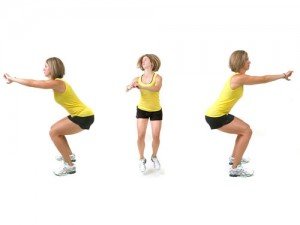
This is an excellent exercise when you want to shed some pounds and fit into that old pair of jeans. This exercise will
help you burn a ton of calories and also targets the muscles in the midsection.
- 4. Burpees
This is one of those exercises that everybody hates, but you still love to do them. Burpees are great for burning calories and increasing your fitness.
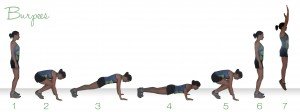
- 5. Pendulum Swings
Pendulum swings are a great at home workout that you can do to increase your heart rate. They’re also great for working your thighs.
- 6. High Knees
This may look like an easy exercise at first, but once you start performing them, you’re going to quickly realize that they’re much harder than you thought.

